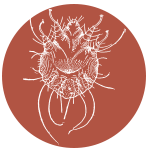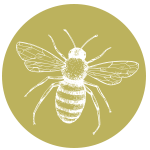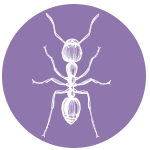Allergy Extracts
Improving Quality of Life Through Allergy Extracts
HollisterStier Allergy has remained committed to supplying high-quality allergy products for over 100 years. We’re eager to see healthcare professionals improve the quality of life for allergy sufferers worldwide and are thankful for the role products play.
When purchasing allergy extracts from HollisterStier Allergy you can expect:
- No Phenol: Our glycerin extracts do not contain phenol in the extraction process. By helping prevent denaturation, these products have an increasingly stable shelf life.1
- High Quality: From holding ourselves to a higher constraint than the FDA requires for standardized cat hair to creating the only dog hair extract that meets Practice Parameter dosing recommendations, we push ourselves to make the highest quality products possible.
- Highly Regulated: Our processes are overseen by both CDER and CBER, providing extra confidence in the quality and safety of our products.
Available Allergy Extracts
Dog Hair Extracts
The only extract on the market fulfilling the practice parameter’s recommended dosing of 15 mcg of Can f 1.2
Cat Hair and Pelt Extracts
AP Cat is more consistently concentrated than FDA requirements.5
Mite Extracts
Rely on our 30,000 au/mL mite for diagnosing patients.
Venom Extracts
As the sole venom extract supplier in North America, we remain dedicated to ensuring adequate supply and quality product.
Insect Extracts
Diagnose and treat fire ant and cockroach allergy patients with our insect extracts.
Pollen Extracts
Our inventory of over 70 pollen extracts allows you to test and treat based on local-to-you pollens.
Mold Extracts
Current practice parameters recommend using the strongest concentrates available3,4, and our molds are 1:10 w/v strength.
Horse and Cattle Extracts
Our Acetone Precipitated (AP) extraction process is designed for maximum concentrations and efficacy.
Food Extracts
Diagnose food allergies in the clinic with our wide variety of scratch test extracts.
1 H.S. Nelson. Preparing and mixing allergen vaccines for subcutaneous immunotherapy. R.F. Lockey, S.C. Bukantz, & J. Bousquet (Eds.), Allergens and allergen immunotherapy, 4th ed., p. 315, 2008.
2 Cox ET AL. Allergen Immunotherapy: A practice parameter third update. The Journal of Allergy and Clinical Immunology, January 2011. DOI: 10.1016/j.jaci.2010.09.034
3 Allergy diagnostic testing: an updated practice parameter. Ann. Allergy Asthma Immunol. 100: S1-S148, 2008.
4 Allergen immunotherapy: a practice parameter second update. J. Allergy Clin. Immunol. 120: S25-S85, 2007.
5. Filep S, Tsay A, Vailes LD, Gadermaier G, Ferreira F, Matsui E, King EM, Chapman MD. Specific allergen concentration of WHO and FDA reference preparations measured using a multiple allergen standard. J Allergy Clin Immunol. 2012 May;129(5):1408-10.









